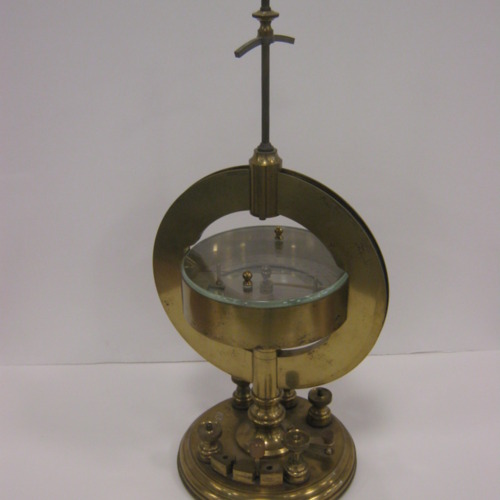Tangent Galvanometer
Title
Tangent Galvanometer
Subject
Electrical Measurements
Description
The tangent galvanometer is a current measuring device. It was first described in an 1837 paper by Claude-Servais-Mathias Pouillet (1790-1868), who later employed this sensitive form of galvanometer to verify Ohm's law. To use the galvanometer, it is first set up on a level surface and the coil aligned with the magnetic north-south direction. A current to be measured is sent through the coil, creating a magnetic field that causes the galvanometer needle to deflect from its north-south alignment. The magnitude of the current is deduced from the angle of deflection of the needle and the known strength of the earth’s magnetic field. Ours is a small and beautifully made tangent galvanometer made by Elliott of London at the beginning of the twentieth century. It has a magnetic adjuster at the top, suggesting that it had to be calibrated by external means.
Source
Property of the W&L Physics & Engineering Department
Files
Citation
“Tangent Galvanometer,” Digital Exhibits at Washington and Lee University Library, accessed September 19, 2024, https://omeka.wlu.edu/omekaorigin/items/show/192.
